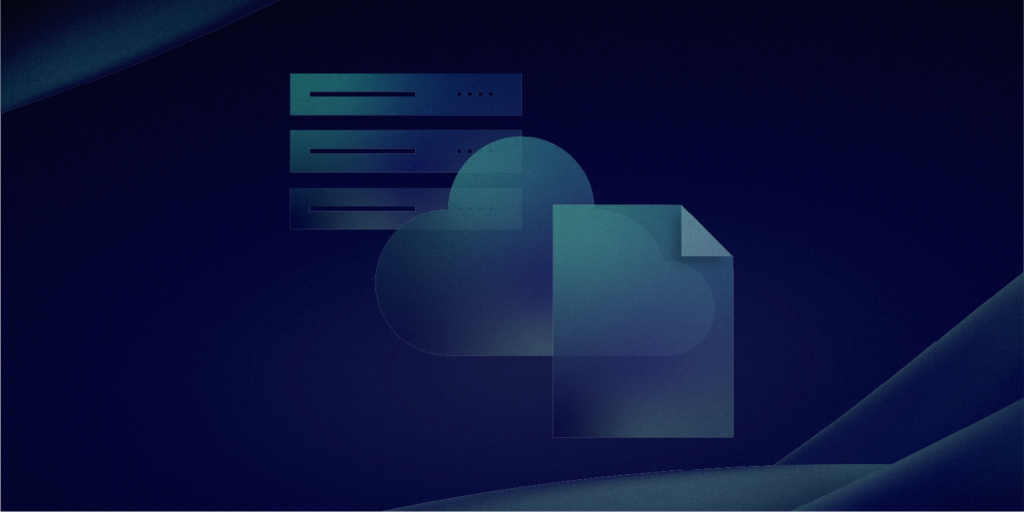
“Friends don’t let friends go without a backup.”
That’s the idea behind World Backup Day, celebrated annually on March 31st. World Backup Day highlights the importance of data protection and if you’re not already doing so, it’s a great day to educate yourself and start backing up your most valuable digital assets.
In this article, we’ll cover when and why World Backup Day started, how it’s evolved with the rise of SaaS apps, how to ensure your critical data is protected against threats, and more.
Plus, don’t miss our guides to the Shared Responsibility Model and the 3-2-1 backup rule.
World Backup Day: A brief history
World Backup Day started in 2011, sparked by a Reddit discussion where a user shared a story about losing their hard drive and others chimed in with their own data loss experiences. A consultant named Ismail Jadun started the annual campaign, and thus, World Backup Day was born! Over the years, the day has gained momentum, with businesses and experts across the globe rallying to spread awareness about proactive data protection, the risk of data loss, and backup best practices.
The rise of SaaS
SaaS apps transformed the way businesses manage and store data. While businesses traditionally relied on on-premises servers and external hard drives, companies are now choosing SaaS solutions for greater flexibility, collaboration, and scalability. Tools like Google Workspace, Atlassian, Slack, and others have revolutionized the way we work, and are vital to our day-to-day business operations.
Despite the many advantages of SaaS, there’s a common misconception that storing data in the cloud means it’s automatically backed up and safe from loss. It’s not.
The increased adoption of SaaS only underscores the importance of a bulletproof backup strategy. Backup strategies have also changed over the years, as businesses abandon physical backups in favor of cloud backup methods. Gone are the days of the tape drive backup; as technology evolves, so too does the way we back up that digital information.
That’s where SaaS backup providers can step in to provide peace of mind. Rather than wasting time and resources building an in-house solution, a third-party backup and recovery solution ensures that you maintain full control over your data.
Why back up your SaaS data?
SaaS adoption is only becoming more widespread; in fact, Gartner predicts that end-user SaaS spending will reach $300 billion this year. That’s a lot of cloud data that is at risk and vulnerable to potential threats. From multinational corporations to local governments, no organization is safe. The reality is that there are several ways for businesses to lose data:
- Accidental deletion: human error remains a leading cause of data loss.
- Malicious insider threats: employees with access can delete or manipulate critical data.
- Ransomware and cyberattacks: attackers can encrypt or destroy cloud-based data.
- SaaS downtime or API failures: outages can leave businesses unable to access essential information.
- AI-driven risks: AI-enabled phishing campaigns, deepfake impersonations, and automated vulnerability exploitation pose new challenges.
The lesson here is simple: Protect your data, protect your business. You may be thinking, “doesn’t my SaaS provider back up my data for me?” The answer is no, and you’re not alone in thinking that: Many organizations mistakenly believe that the data stored in SaaS platforms can be recovered in case of loss. While every SaaS platform has backups and contingency plans for issues impacting their business, their Terms of Service (ToS) explicitly disavow any responsibility for backing up or restoring data at an account level.
Data protection principles to remember
SaaS Shared Responsibility Model
We know that the volume of data stored in the cloud is growing, but who’s responsible for protecting that essential information? The answer is twofold: both the user and the provider share the responsibility for data protection, and these duties are outlined in what’s called the Shared Responsibility Model.
In a nutshell, the Shared Responsibility Model is a framework used to divide responsibilities between SaaS providers and their customers. In the context of data protection, this means that businesses have an obligation to understand the role they play in keeping their own data safe and protecting it from threats.
While SaaS providers secure the necessary infrastructure, platform uptime, and service reliability, customers are responsible for their own data, user access control, and compliance with industry regulations. This means that the onus is on you, the user, to understand the risks to your data and take steps to mitigate those risks. No matter how the data is lost, it’s up to you to get it back.
The 3-2-1 backup rule for SaaS
The 3-2-1 backup rule is a fundamental principle of data protection. It has been around since the days of the tape drive backup, but it’s no less relevant in the cloud era:
Keep three copies of your data on two different media, with one copy stored offsite.
Before we collectively migrated to the cloud, this meant internal and external backups. However, in a SaaS environment, ‘offsite’ means storing backups in an independent cloud platform, separate from the SaaS provider. So the 3-2-1 rule for backups has been updated accordingly:
Keep three copies of your data in two different locations in the cloud, one of which is not your SaaS provider.
Cloud-native businesses must adapt this rule for SaaS applications. Even in the rare cases where SaaS providers offer their own native backup solutions, businesses should seek third-party tools that ensure independent, automated backups that cannot be compromised by the same threats affecting the primary system.
Take action: Make every day World Backup Day
World Backup Day is an important reminder that data loss in SaaS platforms is not an if proposition but a when. What’s your backup plan?
In 2024, 15% of organizations already saw backing up SaaS data as a priority—and by 2028, that number is expected to grow to 75%, according to Gartner.
Get ahead of data loss with our new guide, which outlines the current landscape of data threats, breaks down industry standard practices, and explains how to build data resilience with automated backups. Download Protecting SaaS data in the face of rising risks today!

 Miriam Saslove">
Miriam Saslove">


